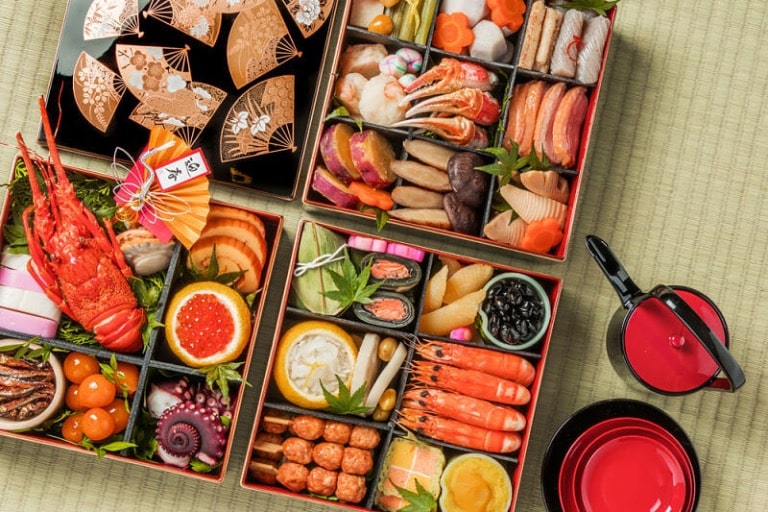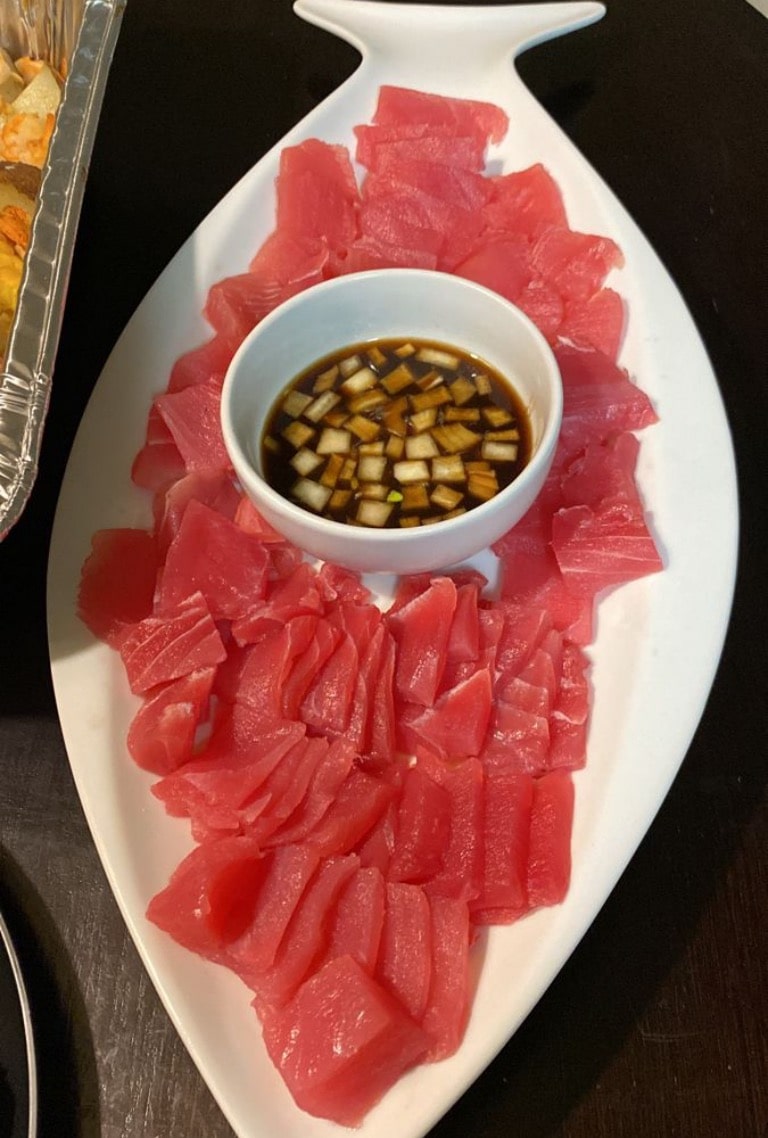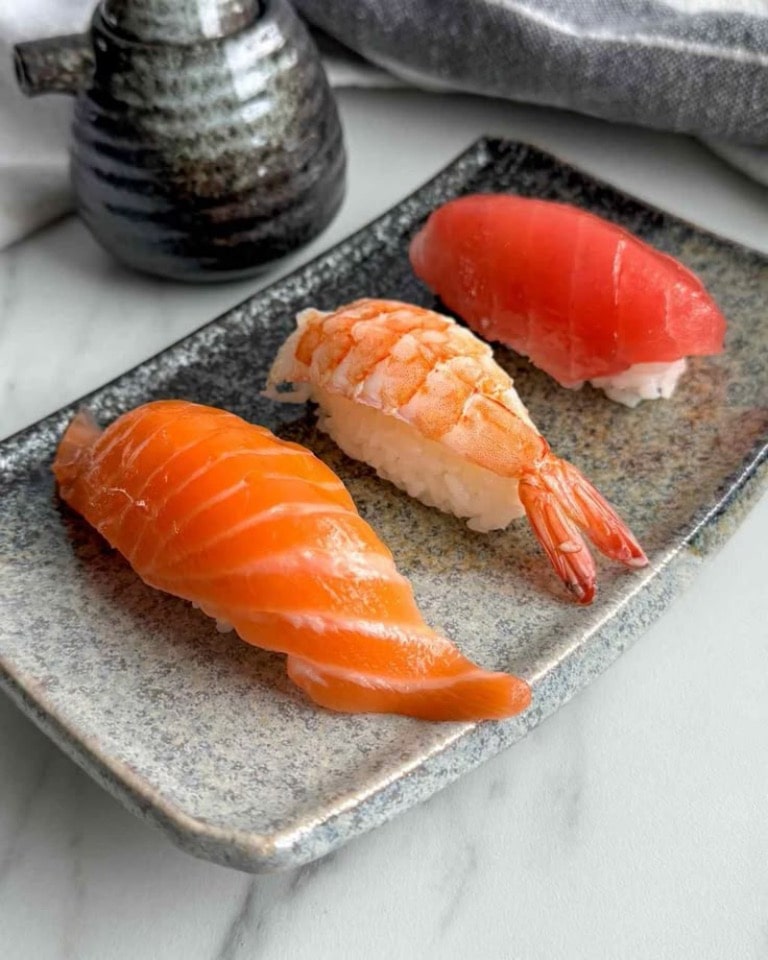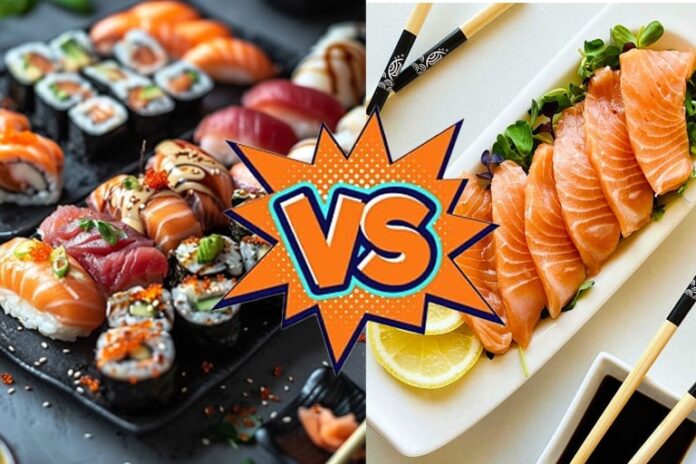I’m a fan of Japanese cuisine. From the comforting warmth of piping hot ramen to the tender slice of melt-in-the-mouth wagyu, there’s both simplicity and elegance to how Japanese prepare their food that makes you want more.
However, if it’s your first time stepping into a Japanese restaurant, there are plenty of delicious choices, but it can be confusing if you’re unfamiliar with this Asian cuisine.
Sushi, one of the most recognizable items on the Japanese menu, for instance, is often confused with sashimi. Although both are Japanese cuisine and contain seafood, they are two completely different dishes.
Here’s everything you should know about sushi vs sashimi—their similarities, differences, and how they’re usually prepared.
What Is the Difference Between Sushi and Sashimi?
One of the likely reasons many people confuse sushi with sashimi is that they occupy a similar role at the table. Both are considered delicacies in Japanese cuisine and can be eaten as a main course or appetizer.

Image source: Google
However, if you order sushi and sashimi in one sitting, you’ll find they’re two different raw fish preparations, with dissimilar ingredients, plating, and flavors.
What Is Sushi?
Okay, but what makes sushi, well, sushi? If you ask any Japanese, they’d tell you it’s sour rice. Without vinegar-soaked rice, you really can’t call it sushi, as the name literally translates to “sour tasting.”
Authentic sushi can have sashimi for toppings (see meaning below) or raw fish, eggs, vegetables, or seafood rolled inside the rice. Still, while raw fish is a staple ingredient, you don’t need it to call the dish sushi.
In many cases, sushi is wrapped in dried, edible seaweed called nori. The vinegar-soaked rice and other fillings are usually spread over the nori sheet, rolled into a cylinder, and sliced before serving.
As for how to eat sushi, expert and Japanese chef Kazunori Nozawa shared his insight on BBC. “Eat your sushi when it arrives,” the Sushi Shokunin (Master) said. “This is especially true so the nori does not lose its texture for hand rolls.”
What Is Sashimi?

Image source: Pinterest
Unlike sushi, sashimi highlights the seafood rather than the rice. It’s a dish consisting of premium, raw fish, sliced thinly. Authentic preparations typically call for soy sauce or wasabi and are eaten by hand or a chopstick.
Most Japanese chefs use saltwater fish to minimize the risk of food contamination. Fresh tuna, mackerel, salmon, and hamachi yellowtail are the common candidates for sashimi. Shrimp and other shellfish, are also prepared the same way.
Many restaurants serve sashimi on a bed of daikon radish, sans rice, nori, and shiso leaves. A slice of ginger may be added to cleanse and refresh your palate between dishes.
What About Nigiri?
Here’s another source of confusion for Japanese cuisine newbies: nigiri. If you ever read this word in a Japanese menu, don’t worry, it’s simply a type of sushi.

Image source: Pinterest
Nigiri uses a pillow of vinegared rice and topping it with raw seafood or sashimi. So, in a way, it somewhat fell in between sushi and sashimi.
That said, it’s mostly considered sushi because of the vinegar-soaked rice. It doesn’t, however, include the other usual suspects, such as veggies, eggs, and cucumbers, and isn’t wrapped in dried seaweed.
Final Thoughts
There you have it! If some of your friends ask what the difference is between sushi and sashimi, you can tell them this: “Sushi is vinegared rice combined with other ingredients while sashimi is raw fish, sliced thinly.”
They’re rather easy to distinguish, right? Now, go share what you learned with others!
Featured image source: Pinterest

